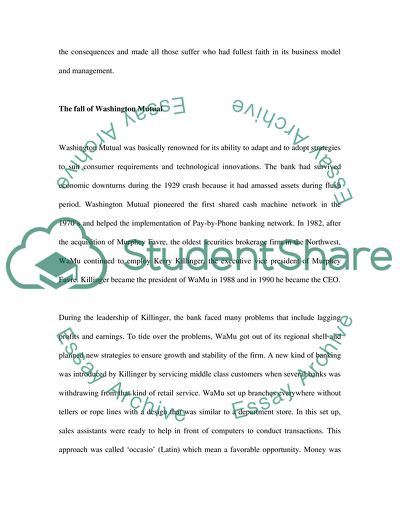Cite this document
(The Fall Of Washington Mutual Bank And Its Implications Case Study, n.d.)
The Fall Of Washington Mutual Bank And Its Implications Case Study. Retrieved from https://studentshare.org/finance-accounting/1730916-the-fall-of-washington-mutual
The Fall Of Washington Mutual Bank And Its Implications Case Study. Retrieved from https://studentshare.org/finance-accounting/1730916-the-fall-of-washington-mutual
(The Fall Of Washington Mutual Bank And Its Implications Case Study)
The Fall Of Washington Mutual Bank And Its Implications Case Study. https://studentshare.org/finance-accounting/1730916-the-fall-of-washington-mutual.
The Fall Of Washington Mutual Bank And Its Implications Case Study. https://studentshare.org/finance-accounting/1730916-the-fall-of-washington-mutual.
“The Fall Of Washington Mutual Bank And Its Implications Case Study”, n.d. https://studentshare.org/finance-accounting/1730916-the-fall-of-washington-mutual.


